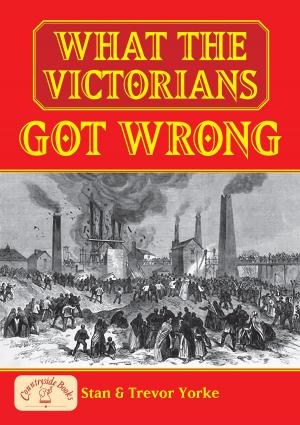| Author: | Martyn Chorlton | ISBN: | 9781846748349 |
| Publisher: | Countryside Books | Publication: | November 13, 2012 |
| Imprint: | Countryside Books | Language: | English |
| Author: | Martyn Chorlton |
| ISBN: | 9781846748349 |
| Publisher: | Countryside Books |
| Publication: | November 13, 2012 |
| Imprint: | Countryside Books |
| Language: | English |
The formation of the Pathfinder Force in August 1942 produced a steady but certain change in the fortunes of Bomber Command. During the early years of the war, aerial photographs showed that less than one third of the aircraft were successfully placing their bombs with accuracy. There was a basic lack of navigational skills, as well as what came to be known in the RAF as the will to 'Press On'. These shortcomings were addressed, and the special force of elite aircrew, the Pathfinder squadrons, whose purpose was to locate targets and mark them, proved indispensible to the success of the RAF’s overall bombing campaign. Led by the inspirational and imaginative Don Bennett, Pathfinders were equipped with the best available aircraft, which included the famous Lancaster bomber and later, increasingly, the Mosquito. To join a Pathfinder squadron (all crewmen were volunteers) was a rare privilege but with it went a huge leap in the likelihood of being shot down. Pathfinder aircraft led the way for their following bomber force in hazardous raid after raid. They were highly vulnerable to the wall of flak thrown up by German city defenders, as well as to attacks by night-fighters; and it took a full 25 minutes to run the gauntlet of the Berlin defences from end to end at full stretch. By the end of the war, some 56,000 crewmen of Bomber Command had lost their lives. Martyn Chorlton has written a gripping account of the RAF’s Pathfinder squadrons, recalling the often reckless heroism of the young aircrew and the challenges they faced in the smoke-filled skies over occupied Europe. His book also contains a moving foreword by Michael Wadsworth, chaplain to the Pathfinders Association.
The formation of the Pathfinder Force in August 1942 produced a steady but certain change in the fortunes of Bomber Command. During the early years of the war, aerial photographs showed that less than one third of the aircraft were successfully placing their bombs with accuracy. There was a basic lack of navigational skills, as well as what came to be known in the RAF as the will to 'Press On'. These shortcomings were addressed, and the special force of elite aircrew, the Pathfinder squadrons, whose purpose was to locate targets and mark them, proved indispensible to the success of the RAF’s overall bombing campaign. Led by the inspirational and imaginative Don Bennett, Pathfinders were equipped with the best available aircraft, which included the famous Lancaster bomber and later, increasingly, the Mosquito. To join a Pathfinder squadron (all crewmen were volunteers) was a rare privilege but with it went a huge leap in the likelihood of being shot down. Pathfinder aircraft led the way for their following bomber force in hazardous raid after raid. They were highly vulnerable to the wall of flak thrown up by German city defenders, as well as to attacks by night-fighters; and it took a full 25 minutes to run the gauntlet of the Berlin defences from end to end at full stretch. By the end of the war, some 56,000 crewmen of Bomber Command had lost their lives. Martyn Chorlton has written a gripping account of the RAF’s Pathfinder squadrons, recalling the often reckless heroism of the young aircrew and the challenges they faced in the smoke-filled skies over occupied Europe. His book also contains a moving foreword by Michael Wadsworth, chaplain to the Pathfinders Association.















